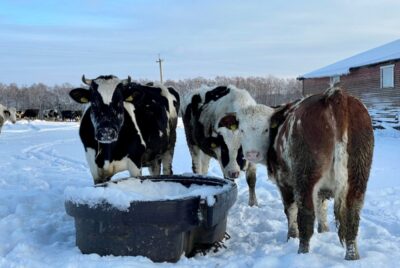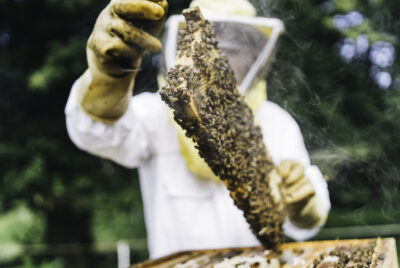Appalachian Homesteading: Embracing a Sustainable Lifestyle
"We may earn a commission from purchases made using our links. Please see disclaimer."
Introduction
As an enthusiast and advisor in the realm of Appalachian homesteading, I am passionate about sharing the wonders of this sustainable lifestyle. In this article, we will explore the essence of Appalachian homesteading, its rising popularity, and the myriad of benefits it offers. We will delve into the essential aspects of starting your own Appalachian homestead, the sustainable practices that can be incorporated, the challenges you may encounter, and the tips for ensuring a successful and fulfilling journey. So, let’s embark on this homesteading adventure together!
What is Appalachian Homesteading?
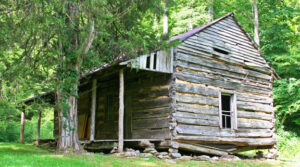 Appalachian homesteading is a lifestyle rooted in self-sufficiency, sustainability, and a deep connection with the natural world. It involves living off the land, cultivating your own food, raising livestock, and utilizing renewable resources. Inspired by the Appalachian region’s rich heritage and traditional farming practices, modern homesteaders embrace the ethos of simplicity and resilience.
Appalachian homesteading is a lifestyle rooted in self-sufficiency, sustainability, and a deep connection with the natural world. It involves living off the land, cultivating your own food, raising livestock, and utilizing renewable resources. Inspired by the Appalachian region’s rich heritage and traditional farming practices, modern homesteaders embrace the ethos of simplicity and resilience.
Appalachian homesteading allows people to live a wholesome, ethical life aligned with their core values. It empowers individuals to take control of their means of production and live in harmony with nature. The Appalachian region provides an ideal landscape for homesteading, with its abundant forests, fertile soil, and mild climate.
Homesteading enables people to lead purpose-driven lives filled with hard but rewarding work. Living off the grid allows homesteaders to disconnect from modern stresses and focus on family, health, and nature.
Why is Appalachian Homesteading Popular?
Appalachian homesteading has witnessed a surge in popularity due to several compelling reasons. Firstly, it provides individuals and families with the opportunity to take control of their food production, leading to healthier and more sustainable diets. Additionally, homesteading allows people to break free from the trappings of consumerism, leading to a simpler and more fulfilling lifestyle. Moreover, the desire to reconnect with nature and escape the stresses of urban living has drawn many to embrace the Appalachian homesteading movement.
The COVID-19 pandemic has also fueled interest in self-sufficiency and sustainable living practices. Technology and remote work trends have enabled more people to relocate to rural areas and pursue homesteading. Cottage industries catering to homesteaders have also grown, providing resources, courses, tools and community. The aesthetics and wholesomeness of homesteading also appeal to many seeking an authentic way of life.
Benefits of Appalachian Homesteading
Self-Sufficiency and Sustainability
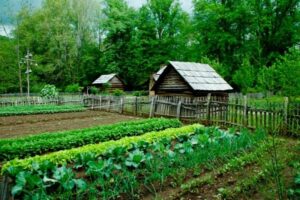 One of the key benefits of Appalachian homesteading is the ability to become self-sufficient. By growing your own food, raising livestock, and harnessing renewable energy sources, you reduce reliance on external systems. This independence provides a sense of security and contributes to a more sustainable future.
One of the key benefits of Appalachian homesteading is the ability to become self-sufficient. By growing your own food, raising livestock, and harnessing renewable energy sources, you reduce reliance on external systems. This independence provides a sense of security and contributes to a more sustainable future.
Appalachian homesteading allows individuals to live off the grid, free from reliance on unsustainable industrial food systems. Mastering homesteading skills equips people with valuable life knowledge and the ability to provide for themselves.
The investment into developing a homestead pays dividends through long-term food security and energy independence.
Connection to Nature and Simplicity
Living in harmony with nature is a fundamental aspect of Appalachian homesteading. By immersing yourself in the rhythms of the natural world, you gain a deeper appreciation for its beauty and significance. Moreover, the simplicity of a homesteading lifestyle encourages mindfulness, gratitude, and a sense of purpose.
The tranquil rural settings and wholesome outdoor work intrinsic to homesteading are profoundly healing and fulfilling. Watching crops grow from seed to harvest cultivates patience and spiritual connection with the land’s bounty. Caring for animals fosters responsibility, empathy, and an understanding of sustainable systems.
Check out what more you can do to help the Appalachian region while starting your journey.
Health and Well-being
 Appalachian homesteading promotes a healthier lifestyle. Consuming organic, homegrown produce and engaging in physical labor contributes to improved physical and mental well-being. The tranquility of the countryside and the bond formed with animals also have therapeutic effects, reducing stress and fostering a balanced mindset.
Appalachian homesteading promotes a healthier lifestyle. Consuming organic, homegrown produce and engaging in physical labor contributes to improved physical and mental well-being. The tranquility of the countryside and the bond formed with animals also have therapeutic effects, reducing stress and fostering a balanced mindset.
Raising children on a homestead provides immersive opportunities for holistic development and character building. The active lifestyle and nutrient-rich diet inherent in homesteading enhance fitness and prevent disease. Close-knit homesteading communities provide emotional support and a sense of belonging.
Starting Your Appalachian Homestead
Choosing the Right Location
Selecting an appropriate location is crucial when starting your Appalachian homestead. Consider factors such as access to water, quality of soil, proximity to markets, and community resources. The Appalachian region offers diverse landscapes, each with its unique advantages, so explore and find the environment that resonates with your vision.
Seek out like-minded local homesteading communities that can provide support, knowledge sharing, and a sense of belonging. Consider your climate preferences, proximity to family, and opportunities to generate supplemental income through agritourism or other ventures when choosing your homestead location.
Land Acquisition and Zoning Regulations
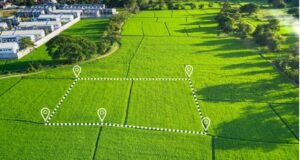 Acquiring land for your homestead requires careful consideration. Research local zoning regulations, property taxes, and land-use policies. Seek properties suitable for your aspirations and verify any restrictions that may impact your plans. Engaging with real estate agents and local homesteading communities can provide valuable insights and support.
Acquiring land for your homestead requires careful consideration. Research local zoning regulations, property taxes, and land-use policies. Seek properties suitable for your aspirations and verify any restrictions that may impact your plans. Engaging with real estate agents and local homesteading communities can provide valuable insights and support.
Utilize USDA loans and grants specifically tailored for those pursuing a homesteading lifestyle. Consider buying raw land versus improved property and factor in costs of development like access roads, utilities, and permits.
Building and Infrastructure
Constructing the necessary infrastructure is a vital step in establishing your Appalachian homestead. Design and build structures that align with your needs, such as a house, barn, chicken coop, and storage facilities. Incorporate sustainable building practices, utilizing reclaimed materials and energy-efficient techniques.
Prioritize quality craftsmanship and durability when constructing infrastructure to minimize maintenance costs over time. Carefully assess your infrastructure needs for the first few years and have expansion plans for additional buildings as your homestead grows.
Essential Homesteading Skills
 Developing essential homesteading skills is crucial for a successful venture. Learn the art of organic gardening, permaculture principles, animal husbandry, food preservation, and basic carpentry. Embrace a mindset of continuous learning and adaptability, as these skills will evolve and grow alongside your homestead.
Developing essential homesteading skills is crucial for a successful venture. Learn the art of organic gardening, permaculture principles, animal husbandry, food preservation, and basic carpentry. Embrace a mindset of continuous learning and adaptability, as these skills will evolve and grow alongside your homestead.
Master fundamental skills first, then expand your knowledge base over time through practice, mentorship, and community learning. Invest in quality books, online courses, and in-person workshops focused on core homesteading competencies.
Sustainable Practices on Your Homestead
Organic Gardening and Permaculture
Organic gardening is the cornerstone of a sustainable homestead. Embrace regenerative practices, nourishing the soil with compost, practicing crop rotation, and minimizing chemical inputs. Permaculture principles, such as companion planting and maximizing ecological relationships, create resilient and biodiverse ecosystems.
Consider forest gardening techniques that mimic natural woodland environments. Building rich, living soil through organic methods enhances nutrient density and promotes plant health without chemicals.
Livestock and Animal Husbandry
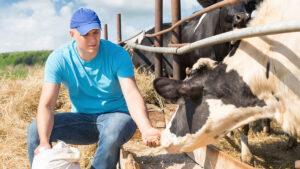 Raising livestock provides a source of food, fiber, and companionship on your homestead. Whether it’s chickens for eggs, goats for milk, or bees for honey, animal husbandry adds depth to your self-sufficiency efforts. Treat your animals with care and respect, providing them with adequate shelter, nutrition, and healthcare.
Raising livestock provides a source of food, fiber, and companionship on your homestead. Whether it’s chickens for eggs, goats for milk, or bees for honey, animal husbandry adds depth to your self-sufficiency efforts. Treat your animals with care and respect, providing them with adequate shelter, nutrition, and healthcare.
Select hardy livestock breeds well-suited for the Appalachian climate and terrain. Provide ample pasture access and quality forage for ruminants to ensure healthy, humane livestock cultivation.
Renewable Energy Sources
Harnessing renewable energy sources empowers your homestead’s sustainability. Install solar panels, wind turbines, or micro-hydropower systems to generate clean energy. By reducing your reliance on the grid, you contribute to a greener future and reduce long-term energy costs.
Leverage federal and state tax credits to offset the startup costs of renewable energy systems. Conduct a renewable energy site assessment to determine which technologies best match your homestead’s resources.
Water Conservation and Management
 Water conservation is vital in any homesteading endeavor. Implement rainwater harvesting systems, utilize graywater for irrigation, and employ efficient watering techniques. Managing water resources ensures a reliable supply for your crops, livestock, and household needs, even in times of drought.
Water conservation is vital in any homesteading endeavor. Implement rainwater harvesting systems, utilize graywater for irrigation, and employ efficient watering techniques. Managing water resources ensures a reliable supply for your crops, livestock, and household needs, even in times of drought.
Installing composting toilets reduces water usage and provides a source of fertilizer. Landscape with native plants suited for the climate and install drip irrigation to minimize water waste.
Challenges and Solutions
Weather and Climate
Appalachian homesteading is not without its challenges, particularly concerning the region’s variable weather and climate. Prepare for unpredictable conditions by diversifying your crops, implementing appropriate infrastructure, and seeking alternative heating and cooling methods.
Build contingency funds to handle emergency repairs and replacements from storm damage. Develop resiliency by growing season-extending and winter-hardy crops to safeguard against challenging weather.
Maintenance and Upkeep
 Maintaining a homestead requires consistent effort and dedication. Regular maintenance of buildings, fences, equipment, and infrastructure is essential to ensure their longevity and functionality. Develop a maintenance schedule and prioritize tasks to stay organized and prevent small issues from becoming significant problems.
Maintaining a homestead requires consistent effort and dedication. Regular maintenance of buildings, fences, equipment, and infrastructure is essential to ensure their longevity and functionality. Develop a maintenance schedule and prioritize tasks to stay organized and prevent small issues from becoming significant problems.
Outsource labor-intensive maintenance tasks when needed to avoid burnout. Maintain a log of repairs and service needs for equipment and infrastructure to inform preventative maintenance.
Pest and Disease Management
Protecting your crops and livestock from pests and diseases is an ongoing task. Implement integrated pest management strategies, such as companion planting, natural predators, and organic pesticides. Regular monitoring and early intervention can help mitigate the impact of pests and diseases on your homestead.
Always follow organic pest control best practices to protect the health of your land, plants, and animals. Learn to identify common pests and diseases and your prevention and treatment options for your region.
Community Engagement and Support
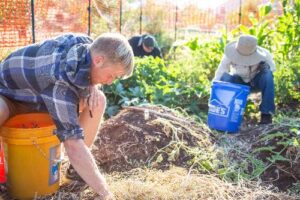 Engaging with the local community and seeking support from fellow homesteaders is invaluable. Attend farmers’ markets, join homesteading associations, and participate in workshops and events. Building connections fosters knowledge sharing, provides emotional support, and creates a sense of belonging.
Engaging with the local community and seeking support from fellow homesteaders is invaluable. Attend farmers’ markets, join homesteading associations, and participate in workshops and events. Building connections fosters knowledge sharing, provides emotional support, and creates a sense of belonging.
Volunteer at community gardens and farms to gain hands-on experience and meet like-minded people. Host work parties and social events to strengthen bonds within your homesteading community.
Tips for a Successful Appalachian Homestead
Research and Planning
Thorough research and planning lay the foundation for a successful Appalachian homestead. Study the region, its climate, and specific challenges. Create a comprehensive business plan, considering financial aspects, timelines, and goals. Knowledge is your most valuable asset, so invest time in acquiring it.
Consult with experienced homesteaders when formulating your plans to benefit from their wisdom. Define your vision, objectives, and non-negotiables to guide decision-making and set priorities for your homestead.
Start Small and Learn as You Go
 Starting small allows you to build experience, refine your processes, and minimize overwhelm. Begin with a few key projects and expand gradually. Learning from your successes and failures enables continuous improvement and fosters resilience.
Starting small allows you to build experience, refine your processes, and minimize overwhelm. Begin with a few key projects and expand gradually. Learning from your successes and failures enables continuous improvement and fosters resilience.
Focus on setting up highly functional core systems before taking on too many new ventures. Master a few homesteading skills well first, then broaden your knowledge foundation over the years.
Establishing a Routine and Work-Life Balance
Creating a routine and maintaining a healthy work-life balance is crucial. Homesteading requires dedicated effort, but it’s essential to avoid burnout. Prioritize self-care, allocate time for relaxation, and involve your family in the homesteading activities to share the workload and create meaningful connections.
Schedule regular days off and mini-vacations to unwind and prevent fatigue. Designate set work hours and make full use of winter downtime to refresh and refocus.
Networking and Learning from Others
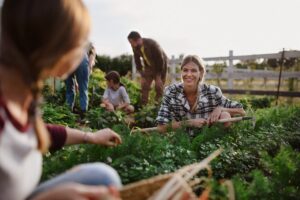 Connect with fellow homesteaders, attend workshops, and seek mentorship opportunities. Learning from those who have already navigated the homesteading journey can save you time, effort, and resources. Embrace the wisdom of the homesteading community and share your experiences to foster collective growth.
Connect with fellow homesteaders, attend workshops, and seek mentorship opportunities. Learning from those who have already navigated the homesteading journey can save you time, effort, and resources. Embrace the wisdom of the homesteading community and share your experiences to foster collective growth.
Leverage online homesteading forums and social media groups to exchange ideas and get feedback. Forge personal connections with homesteading mentors who can provide ongoing guidance and support.
Conclusion
Embracing the lifestyle of Appalachian homesteading opens a world of possibilities for self-sufficiency, sustainability, and a deeper connection with nature. By taking the first steps towards creating your own homestead, you contribute to a more sustainable future for yourself and generations to come. It is a journey that requires dedication, resilience, and continuous learning. So, join the Appalachian homesteading movement and discover the joy of living in harmony with the land.
FAQs (Frequently Asked Questions)
Is Appalachian homesteading suitable for everyone?
While Appalachian homesteading offers numerous benefits, it requires commitment, hard work, and a passion for sustainable living. Assess your readiness, resources, and personal goals before embarking on this journey.
Consider starting with a homesteading apprenticeship to test if the lifestyle resonates. The flexibility of modern homesteading makes it accessible to more people, including part-time and urban homesteaders.
What are the financial considerations when starting an Appalachian homestead?
Starting a homestead requires financial investment. Consider the costs of land acquisition, infrastructure development, equipment, and ongoing maintenance. Plan your finances accordingly and explore funding options and grants that support sustainable agriculture initiatives.
Develop multiple income streams through value-added products, agritourism, etc. to support your homestead. Create a detailed budget accounting for all startup and ongoing expenses to determine the capital required to establish your homestead.
Can I practice Appalachian homesteading in an urban environment?
While the Appalachian homesteading movement is often associated with rural areas, you can adapt its principles to an urban or suburban setting. Explore container gardening, rooftop beekeeping, and alternative energy solutions to incorporate elements of self-sufficiency into urban living.
Join forces with community gardens and urban farms to access land and resources. Focus on small-scale intensive growing methods, preserving, and seed saving as key skills for urban homesteading.
What if I lack experience in gardening or animal husbandry?
Appalachian homesteading is a continuous learning journey. Start with small projects, seek guidance from experienced homesteaders, and take advantage of online resources, books, and workshops to develop the necessary skills over time.
Consider interning on an established homestead to get hands-on training. Join community gardens and 4H clubs to gain experience before launching your own homestead.
How can I involve my children in the homesteading lifestyle?
Homesteading offers a valuable opportunity to teach children about self-reliance, sustainability, and the importance of nature. Involve them in age-appropriate tasks, such as tending to the garden, caring for animals, and engaging in outdoor activities. Encourage their curiosity and foster a love for the natural world.
Make learning fun by integrating games, stories, and hands-on lessons into their homesteading experiences. Let children design their own garden plots and assist with cooking homegrown food to connect them with its origins.
If you are enjoying our article show us some Love and PIN the image below on Pinterest!



